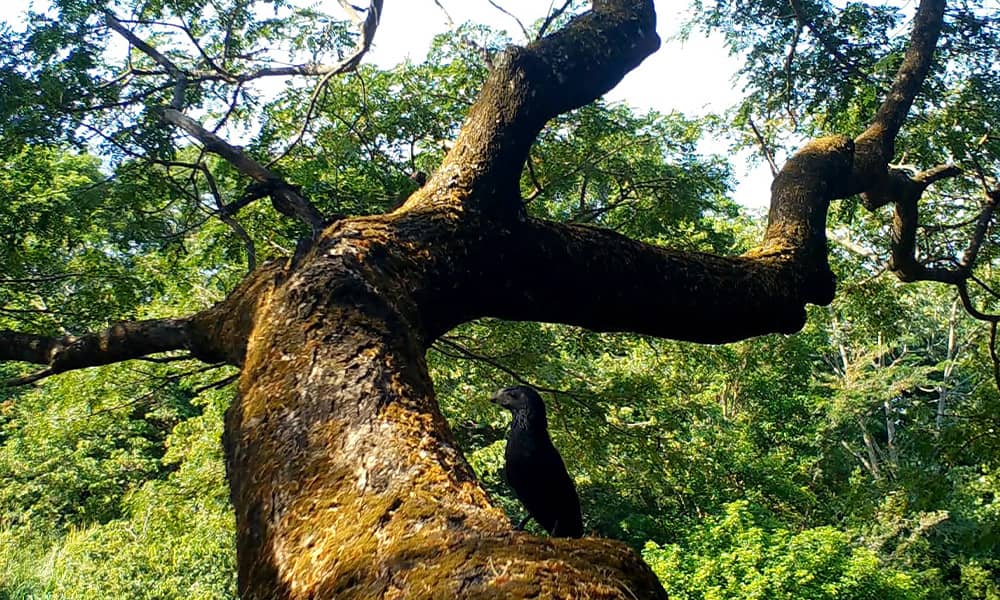Hey! Don’t skip this article because the picture is of a fairly nondescript all black bird! It’s not boring just because it’s one solid color. Trust me. It’s worth meeting the groove-billed ani.
The groove-billed ani (Crotophaga sulcirostris) is known as the tijo in Spanish. Much like the long-tailed manakin, this bird earned its Spanish name by the sound that it makes. Tijos fly around Costa Rica yelling ‘TEE-ho, TEE-ho!’ You really can’t argue with that naming methodology.
Groove-billed anis are a member of the cuckoo family which is well represented in Costa Rica. If you peruse the cuckoo pages of your Costa Rica bird book you will notice that many of the members of this group have some pizazz in the form of a flashy tail, interesting color patterns, or feathery mohawks. The groove-bill ani doesn’t have any of these features, but it does sport an oversized, arched beak with grooves running down the length of it.
Groove-billed anis are found throughout much of the northern portion of Costa Rica. In the south they are replaced by the very similar looking smooth-billed ani. They are common within their range, so if you’re in groove-billed ani territory, it isn’t terribly hard to find them. They tend to live in more open habitats rather than closed forests. You’ll spot them along the roadside, in pastures and in more open/scrubby forests.
They travel in small flocks of six to eight individuals. I frequently see them while checking camera traps in Guanacaste. Normally, I hear their ‘TEE-ho!” calls first before I see them. If I sit still and wait for movement, I’ll spot the small group hopping around in the lower, vine-tangled part of the forest trying to scare their insect prey into taking their last flight.
Sometimes, they let other animals do the scaring. I’ve seen them following cows through pastures, like cattle egrets, waiting for the cows to kick up grasshoppers that they will swoop down and eat. I’ve also watched them follow hordes of army ants, gobbling down the insects that attempt to fly away from the churning mass of ants.
Even though they are common in the habitats where I place my camera traps, I don’t record groove-billed anis very frequently. Mostly because the thick vegetation and tangled vines that they are often hunting in are bad places to put a camera trap. As soon as the wind blows, the vines and leaves start to sway, tricking my motion-sensor cameras into recording hundreds of videos of plants in the breeze.
I have managed to record a few videos of anis with cameras located in trees, around sources of water, and once, with a camera that fell out of a tree but happened land amid a swarm of army ants and recorded an ani feeding on insects fleeing from the ants. Check out some groove-billed anis in the video below.
About the Author
Vincent Losasso, founder of Guanacaste Wildlife Monitoring, is a biologist who works with camera traps throughout Costa Rica. Learn more about his projects on facebook or instagram. You can also email him at: vincent@guanacastewildlifemonitoring.com

